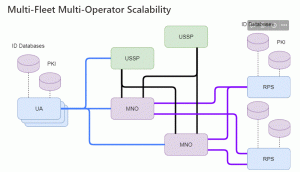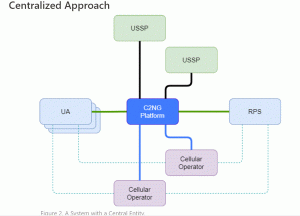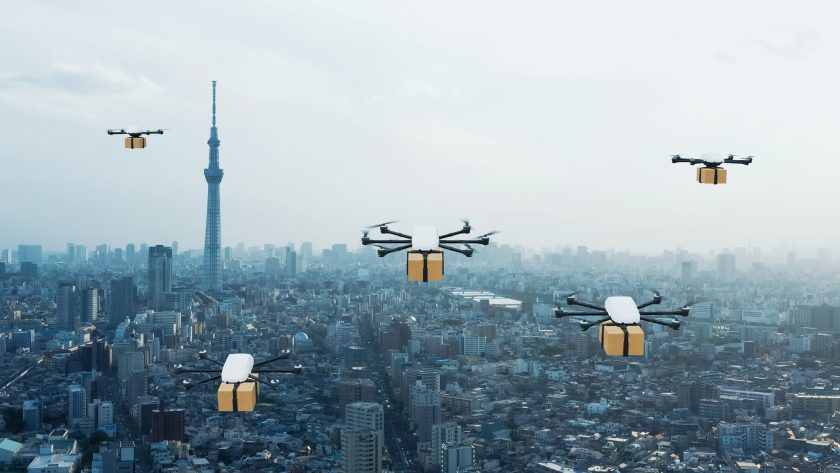Boris Resnick is a CTO at Flyvercity (https://www.flyvercity.com/), an Israeli company that builds 5G-based services for drone operators and traffic management. Boris also leads ACJA Working Task 4 (https://www.gsma.com/iot/aerial-connectivity-joint-activity/) and EUROCAE/RTCA joint activity for UAS C2 Communications via Cellular (https://eurocae.net/about-us/working-groups/). Flyvercity builds the C2NG software platform that implements the approach. The system validation trials are ongoing.
C2 Capability and Performance-Based Requirements
Today, beyond-visual-line-of-sight flights of the uncrewed aviation systems, critically rely on command-and-control (C2) communications. Multiple factors influence performance requirements for these communications, including regional regulatory frameworks, types of intended operations, and aircraft-related factors, such as autonomy or design assurance levels.
Any system that intends to provide such communication services must account for two aspects to be acceptable to the aviation community and regulators. First, it must adopt a generic probabilistic approach to performance-based requirements endorsed by ICAO. For UAS command-and-control, this approach is reflected in the RTCA’s standards (DO-377A and upcoming versions). Second, there should be an entity responsible not only for the design and deployment of the capability but also for ensuring ongoing operational monitoring and compliance with the service level agreements.
C2 Communications Service Provider
Today, the general framework for C2 service provision is outlined by ICAO with their concept of the command-and-control communications service provider (C2CSP). However, the definition is very high level and primarily postulates a need for C2CSP to exist at all times, even a drone operator fulfills this role by itself. These considerations are primarily from the domain of higher-risk applications (we call it so for the lack of a better umbrella term), which may include flight in non-segregated airspace, heavier drones, international flight, and everything that falls into the Certified category defined in Europe. Vendors in this domain generally target equipment endorsed by an FAA TSO or EASA ETSO. Whatever costs and efforts are needed to develop, certify, deploy, and operate such a C2 system, the industry can significantly rely on the best practices long established for airborne communications systems. There are three properties that these systems hold (with some exceptions, though), and that are important for our considerations: first, these systems are made for aviation from the ground up; second, operators also come from aviation; and third, these operators are few.
However, when we change our perspective to the other set of applications, especially low-level urban flight. For these applications, we hardly can expect the same systems deployed, as there are multiple limitations, especially cost.
Cellular Connectivity for Low-Level Applications
Cellular systems present a viable solution (and, arguably, the only viable) for a set of urban use cases, including urban medical deliveries, emergency response, law enforcement and surveillance, and, ultimately, small package delivery. Recent European Drone Strategy 2.0 endorses the cellular approach as it is being extensively studied by Aerial Connectivity Joint Activity, and will be supported by upcoming aviation (EUROCAE/RTCA) and telecommunications (3GPP) specifications. Emerging capabilities of the new generation 5G system, such as network slicing, can provide increased efficiency for drone safety-related applications.
As an important difference, though, the cellular system does not hold the properties we described: they are built for multiple industries, and there exists a whole range of cellular network providers with connection with aviation and no related expertise. A drone operator may employ a private 4G or 5G private network to implement a C2 capability and serve as their own C2CSP, but the cost is high and scalability is limited. Operators that seek future-proof scalability have leverage in the ongoing deployment of public networks and work with first-tier mobile network operators (MNO) to acquire a wide zone coverage.
Multi-Fleet Multi-Operator Scalability

Figure 1. Multi-Fleet Multi-Operator Interconnections.
As operations grow up into being a muti-fleet (with multiple drone operators involved) multi-provider, significant scalability issues arise. Considering C2 capability, two types of providers are involved: cellular network providers and unmanned traffic management (UTM) service providers (USS or USSP, depending on the terminology we choose). 3GPP identified the necessity of aerial connection authorization to ensure that a given subscriber is permitted to fly using the network.
On the other hand, alongside performance, aviation standardization also defines a comprehensive set of security requirements: radio link security, aviation data exchange network security, and end-to-end (E2E) encryption requirements. Some regulatory frameworks may also call for lawful interception capability, which is hard to combine with the E2E encryption requirement.
Hence, in a multi-fleet multi-operator environment, successful deployment generates a whole set of organizational relationships and technical integrations:
- each drone operator has to establish an SLA with each MNO. Such SLA defines performance based on an aviation-defined performance-based approach (e.g., calls for a particular continuity of service);
- drone operators also have to manage the security credentials of their vehicles, ground control stations, and all relevant communication segments;
- each MNO shall establish a means to monitor their performance against the SLA, which defines parameters generally not monitored by the operators;
- each MNO shall establish an authorization procedure with each USSP that may serve UAS within their coverage;
While not exactly in the scope of C2 provisions, each drone operator shall also work with at least one of the USSPs. Altogether, this system has significant scalability problems: combinatorial growth of interconnections, foreign expertise requirements (aviation-defined performance for MNOs and, vice versa, cellular network intricacies for drone operators, and diluted flight safety accountability.
Centralized Approach

Figure 2. A System with a Central Entity.
The author believes that the introduction of a centralized element may factorize the system and streamline scalability. Assuming the role of C2SCP for cellular connectivity is a natural first step for this entity, it also may facilitate security provisions such as credentials management, and lawful interception if necessary. Another critical function is conformance monitoring, as the C2CSP, contrary to a generic MNO, is able to monitor aviation-specific parameters, such as data link availability, etc.
With a dedicated cellular C2CSP, the number of required interconnections is drastically decreased:
- each drone operator has to establish a single SLA with the C2CSP within a given coverage area;
- each MNO has to establish a single secondary SLA and does not have to monitor any aviation-specific parameters, as this will be the responsibility of the C2CSP;
- The aerial connection authorization implementation burden also moved off drone operators to the C2CSP, which can integrate with all relevant UTM systems.
A centralized C2CSP is also an entity capable of liaison with regulators and helping drone operators to acquire operational approvals without building full-scale cellular expertise in-house. As regulators and the community explores further the definitions, requirements, and implementation details of the cellular Command-and-Control, a centralized aerial connectivity platform may assume more responsibilities, helping both drone operators and mobile network operators to focus on their core businesses.
Future Considerations
Besides command-and-control connections, other connectivity-based capabilities are identified within the UTM ecosystem, such as cellular-based detect-and-avoid and network-assisted tactical deconfliction and other advanced U-space services. A centralized platform will be capable to coordinate connectivity for these capabilities as well. Other future considerations include the support of non-terrestrial cellular or hybrid networks.
(Image:Shutterstock)




